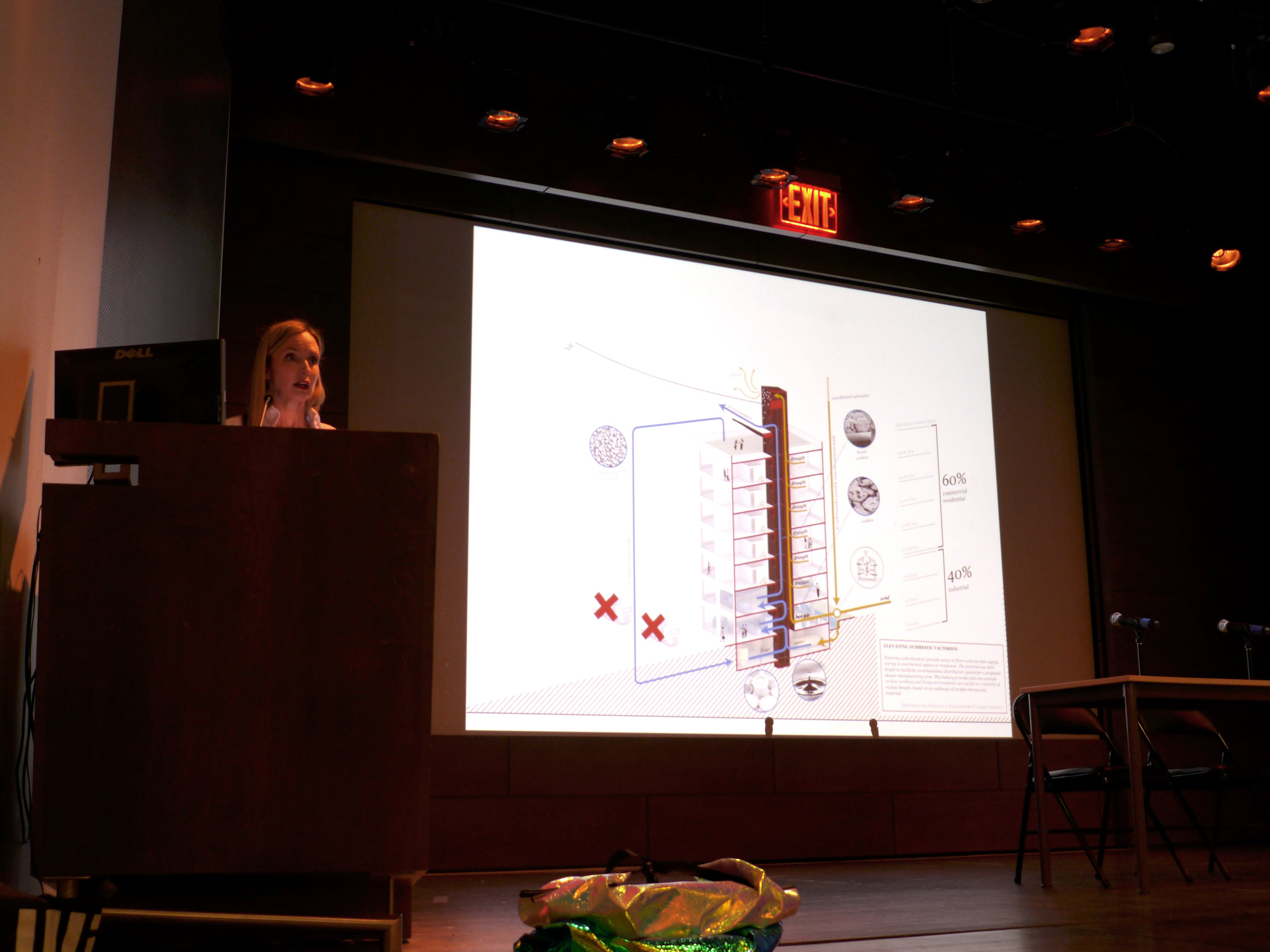On March 31, 2016, the MIT Club of New York joined forces with Cooper Union’s Irwin S. Chanin School of Architecture for a signature event. Carlo Ratti, Professor of the Practice in the School of Architecture + Planning at MIT and Director of the SENSEable City Lab, came to New York for a dual presentation and a discussion with artist and engineer Natalie Jeremijenko, head of the Environmental Health Clinic at NYU. The event began with an introduction by Nader Tehrani, Dean of Architecture at Cooper Union, who headed the Department of Architecture at MIT from 2010 to 2014.
Natalie Jeremijenko gave the first presentation, explaining how she works between disciplines to create new paradigms for social and environmental change. She presented a number of her projects, including: the London Phenological Clock, which tracks and presents the life cycles of species in urban ecosystems to understand the interdependency between them; BioChar, a product made from household waste which enriches soil and sequesters carbon, and generates energy as part of its creation; and Butterfly Bridge, a proposal for Long Island City designed to lure butterflies away from traffic, creating an urban infrastructure which enhances the natural world.
Professor Ratti gave the second presentation, delving into many of his recent works including: the Future Food District for Expo Milano 2015, a proposal for an enhanced, information-rich grocery store; the New Holland Agriculture Pavilion, also for Expo Milano 2015, featuring two self-driving tractors “drawing” on a planted roof; and DriveWave, a proposal for an intelligent traffic intersection defined by a real-time control system that seamlessly knits together flows of cars, pedestrians and bicyclists.
Ratti and Jeremijenko then sat down for an open-ended conversation on the relationship between technology, design, and urbanism, and the new possibilities that exist between these them. An engaged crowd of over 79 attendees consisting of architects, engineers, urban planners, artists, and the like asked many intelligent and philosophical questions, extending the event well into the evening.





